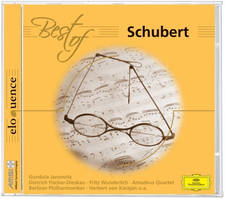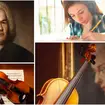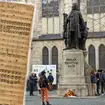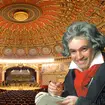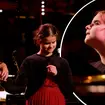J.S. Bach: Brandenburg Concerto No.5 - Full Works Concert Highlight of the Week
Jane Jones tells how Bach found a new harpsichord, a new wife and looked for a new job.
At the beginning of the 18th century, all the decent music jobs were linked with either church or state, and with political upheaval the norm for many of Europe’s small states, the church offered a more stable future for composers.
J.S. Bach was no stranger to the kind of political manoeuvrings necessary to get a good job, which is how the one time church organist found himself as Music Director at the Court of Leopold of Anhalt-Cothen, in charge of a number of distinguished musicians who’d been fired by King Frederick William when military might proved more important than music. By contrast, Prince Leopold was a music lover – and not a bad musician either – who encouraged Bach in every aspect of court music making.
It was thanks to his employer’s enthusiasm, that Bach found himself in Berlin in 1719, charged with buying a new harpsichord. Whilst there, he played for Christian Ludwig, the Margrave of Brandenburg (pictured), who was so impressed he asked Bach to send him some compositions. Back in Cothen, Bach faced personal tragedy with the death of his baby son, closely followed by the loss of his wife so any thoughts of a new work for the Margrave were far from his mind. But then in 1721, his boss Leopold got engaged – and all the signs were that his chosen partner didn’t share the Prince’s love of music, and had her own ideas on how to spend the money used to employ Bach and his orchestra. Bach recognised the writing on the wall, and realising that his job might be a risk, remembered his meeting with the Margrave.
The time was right to fulfil that request for a composition, in the hope it might lead to a job! Bach chose six of the finest concertos he’d written whilst at Cothen, had them beautifully bound and sent to the Margrave complete with a flowery dedication.
But it was all in vain. No job materialised at Brandenburg, and its possible the Margrave never heard any of the magnificent concertos which now bear his name, because his court orchestra simply wasn’t up to it. The manuscripts lay untouched for over a century before being published in 1850.
The innovative Brandenburg Concerto No.5 is inspired by that new harpsichord Bach ordered in Berlin when he met the Margrave, as it is one of three featured instruments in this concerto, along with the flute and violin. The second movement features this trio alone before the entire ensemble comes together for a joyous finale, showcasing Bach’s ingenious use of counterpoint. It’s recognised now as one of the forerunners to what would become Bach’s later keyboard concertos, and as you’d expect, it’s designed to demonstrate the composer’s tremendous skill and virtuosity.
Bach may not have got a new job thanks to his Brandenburg Concertos, but he was right about his long term prospects at Cothen. With his marriage, Prince Leopold’s financial and artistic commitment to his court musicians did come to an end, and Bach eventually moved back to a job with the church. His next appointment as Cantor at the School of St.Thomas in Leipzig was also his last – he was still in the job 27 years later when he died in 1750.
